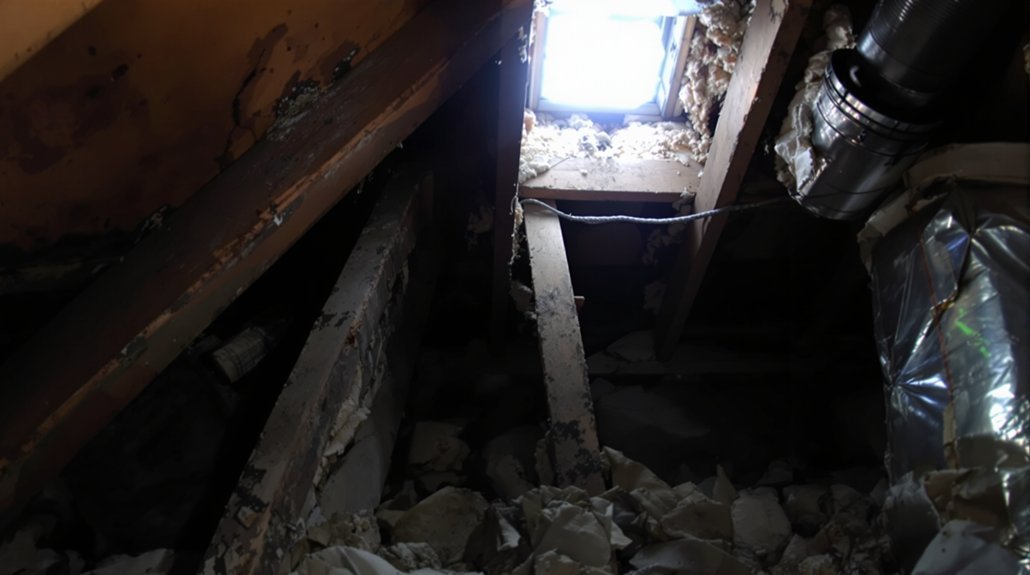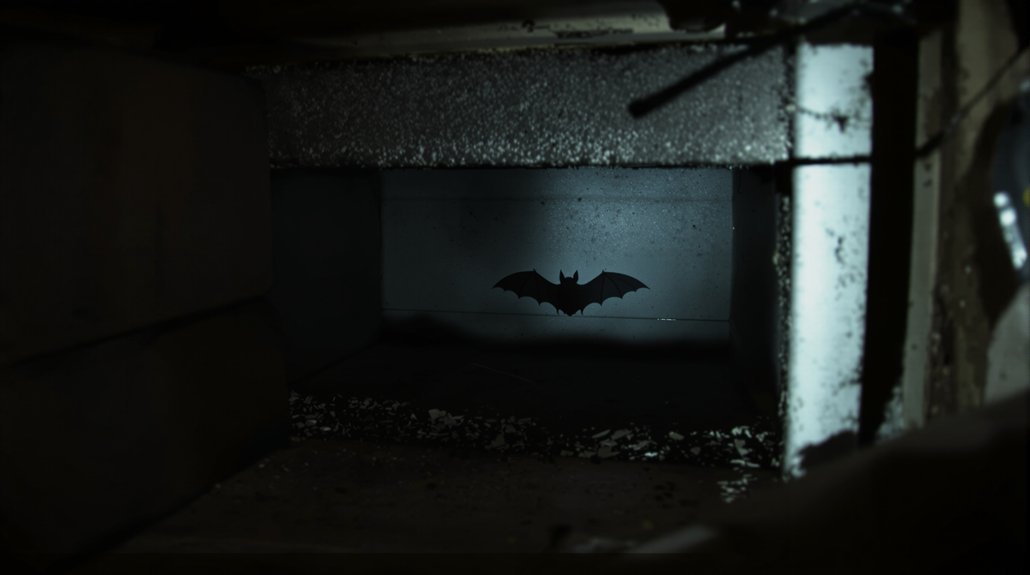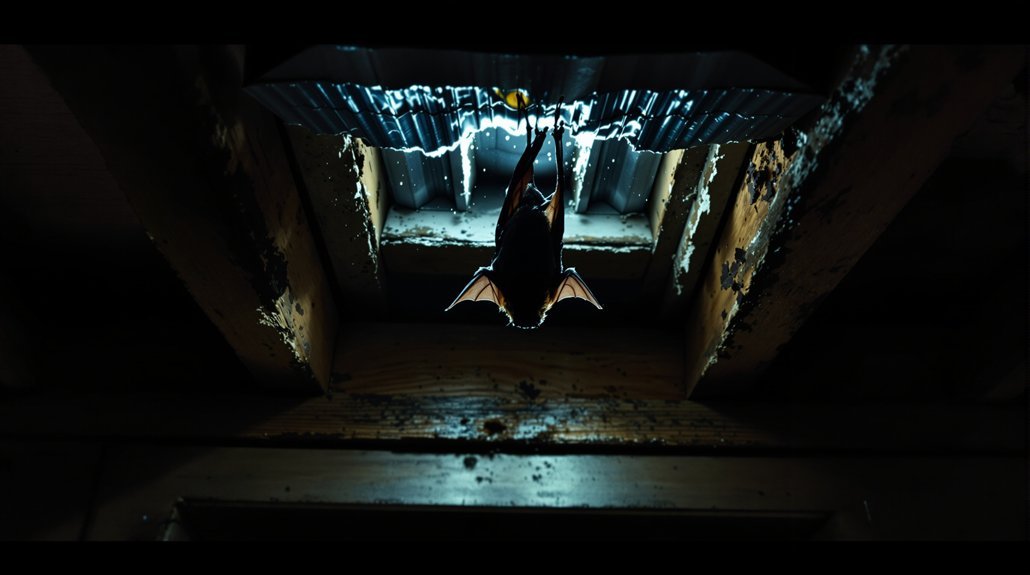Bats often hide in several common places during the night in homes in Des Moines. They may seek refuge in dark areas of attics or basements where it is quiet. Bats can also squeeze behind walls or ceilings, using gaps for entry. Chimneys and vents are typical hiding spots, especially if they are not secured. Additionally, areas under eaves and roof overhangs provide shelter. There are many more hiding spots that may surprise you.
Key Article Highlights
- Bats often hide in dark, undisturbed areas of attics, utilizing gaps in insulation or corners for concealment.
- Basements provide quiet spaces with low light, making them suitable for bats to roost at night.
- Behind walls and ceilings, bats can find dark, hidden spaces that are difficult for homeowners to detect.
- Small openings in chimneys and vents serve as entry points and roosting areas for bats seeking warmth.
- Under eaves and roof overhangs are common daytime hiding spots that offer protection from the elements.
Common Hiding Spots in Attics

Where do bats commonly hide in attics? Bats often seek refuge in dark, undisturbed areas of attics. These spaces serve as ideal bat roosts, providing safety and warmth. Common hiding spots include gaps in attic insulation, where bats can squeeze in easily. They may also settle in corners or behind beams, where they are less likely to be disturbed. Bats prefer locations that are away from human activity, allowing them to rest during the day. Insulation materials can also provide a cozy environment for bats, as they help to regulate temperature. Additionally, entry points and roosting sites are critical areas to inspect for effective bat removal and prevention. Homeowners should be aware of these hiding spots to manage bat populations effectively. Identifying these areas is essential for proper removal and prevention measures. Proper inspection of potential entry points can help prevent future bat intrusions and ensure a safe living environment.
Dark Corners of Basements

Bats can also find refuge in the dark corners of basements. These areas provide a quiet and hidden space, ideal for many bat species. Basements often have low light and minimal human activity, making them appealing for roosting. Bats are nocturnal creatures, and they prefer places where they can rest during the day.
In addition to safety, the basement may offer a suitable environment for a bat’s diet. Some species feed on insects, which may be present in or near basements. This makes the location more attractive for bats seeking food sources. Homeowners should be aware of these hiding spots to manage any potential bat presence effectively, ensuring a safe environment for both humans and wildlife.
Behind Walls and Ceilings

Many homeowners may not realize that bats often seek shelter behind walls and ceilings. These spaces provide a dark, quiet environment that suits their nocturnal behavior. Bats can enter homes through small bat entry points, such as gaps around windows, doors, or vents. Once inside, they may find their way into the hidden areas of walls and ceilings, making it difficult for homeowners to detect their presence. The insulation and structure of walls can offer protection from predators and a warm place to roost during the day. Understanding these hiding spots is essential for those wanting to manage bat populations in their homes. Regular inspections can help identify potential entry points and prevent bats from settling in unwanted areas.
Inside Chimneys and Vents
Chimneys and vents can serve as unexpected hiding spots for bats in homes. These structures often have small openings, acting as bat entry points. Bats are attracted to chimneys because they provide a dark, warm space that mimics their natural roosting habits. When bats enter a chimney, they may find a cozy spot to rest during the day. Vents, especially those that are not screened properly, can also allow bats to slip inside. Homeowners should inspect these areas for signs of bats, such as droppings or noises. Keeping chimneys and vents secure can help prevent bats from making a home within the house. Awareness of these potential entry points is key to bat management.
Under Eaves and Roof Overhangs
Under eaves and roof overhangs can also provide ideal hiding spots for bats in Des Moines homes. Bats prefer sheltered areas where they can rest during the day and escape predators. The small gaps found under eaves can be perfect for this purpose. Given their nocturnal habits, bats are active at night and seek safe places to roost during daylight. These sheltered spots protect them from wind and rain, ensuring a safe environment. Homeowners may find bats nesting in these areas, especially in older homes with wear and tear. Understanding bat preferences can help residents identify potential roosting sites. By being aware of these locations, homeowners can take steps to manage or protect the bats effectively.

